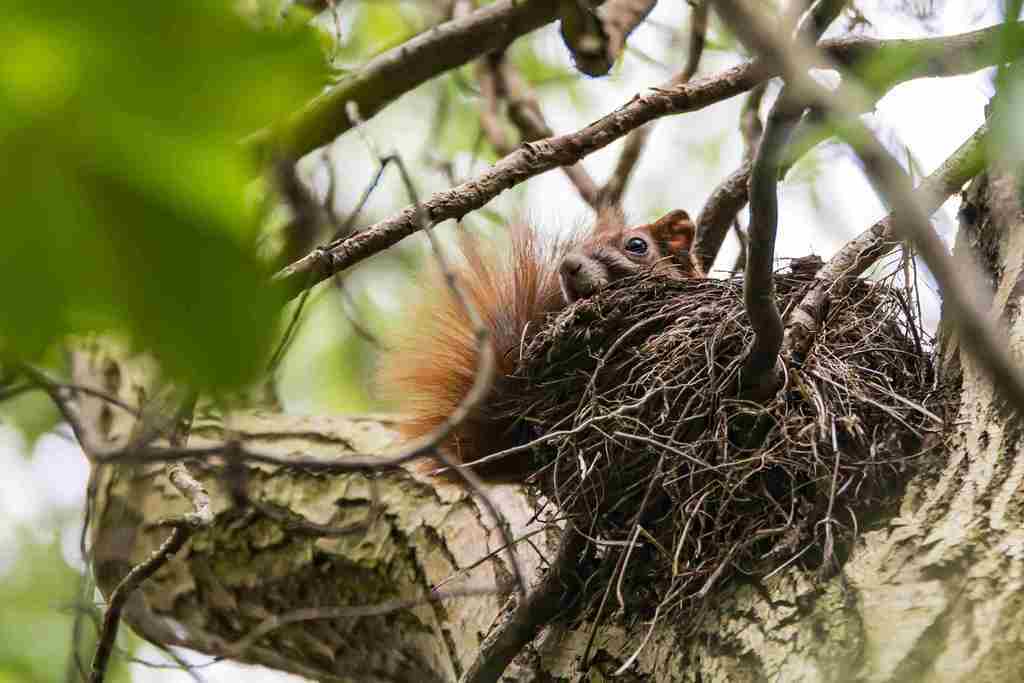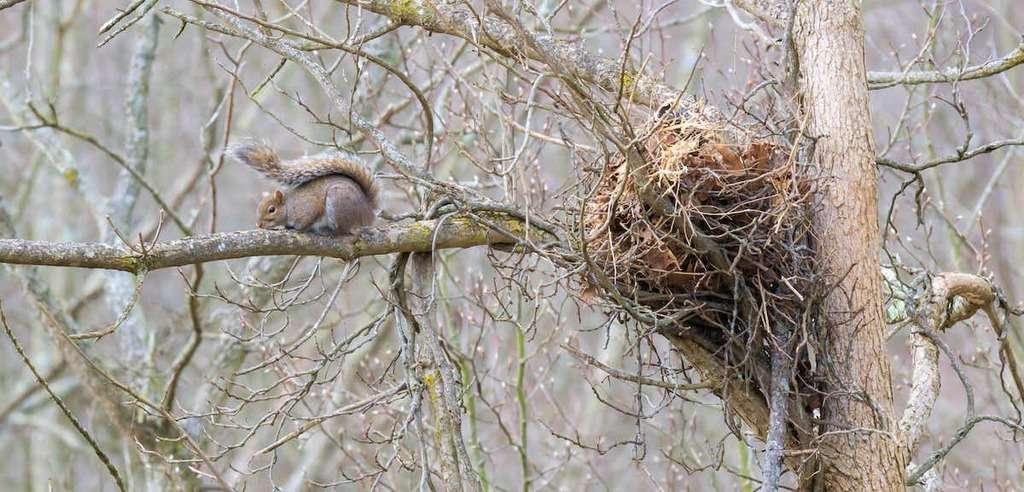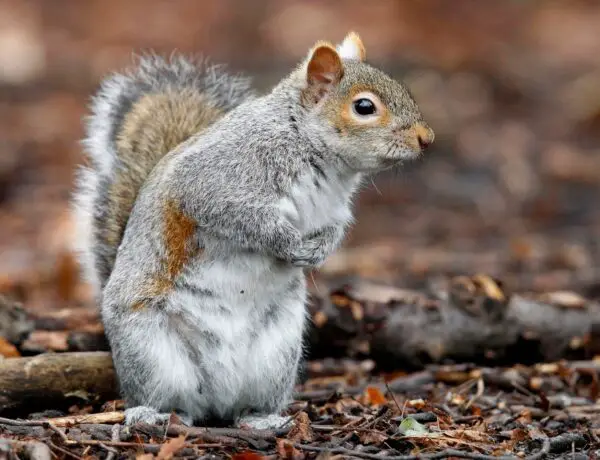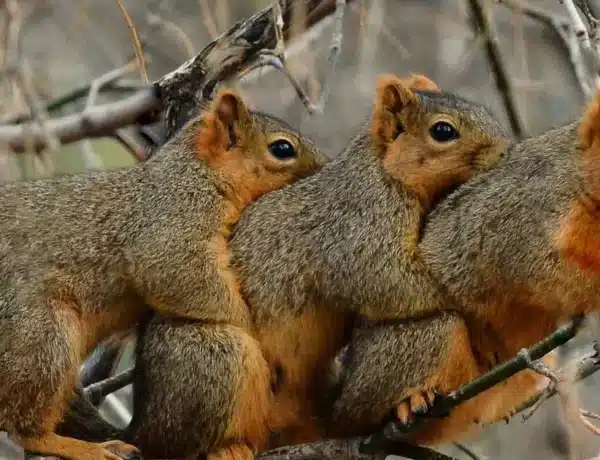Introduction
Do Squirrels Make Nests: Squirrels, those small and sprightly members of the rodent family, have long captured our curiosity with their acrobatic antics and bushy tails. Yet, their nesting habits often remain a mystery to many. In the squirrels hibernate nest-building and uncover the secrets of their architectural prowess. Squirrels, with their diverse species spread across different continents, have adapted to various environments and climates. As a their nest-building strategies vary widely. To understand whether squirrels make nests, we must first recognize that not all squirrels build nests in the traditional sense. While some species are renowned for their elaborate nests, others adopt alternative sheltering techniques.
One of the most well-known squirrel species in North America is the eastern gray squirrel. These charismatic rodents are prolific nest builders, crafting intricate shelters high up in the trees. They use leaves, twigs, and other natural materials to create cozy structures, known as dreys, within the branches. These dreys serve as both homes and safe havens for raising their young, protecting them from predators and inclement weather. Similarly, red squirrels, native to parts of North America and Eurasia, engage in nest-building behavior, constructing spherical nests, or “caches,” made from leaves, moss, and grass.
These caches are tucked away in tree branches or hidden within tree cavities, a concealed and secure place for the squirrels to rest and store their food. However, not all squirrel species adopt such traditional nesting techniques. Ground squirrels, for instance, often dig burrows in the earth rather than constructing nests in trees. These burrows, equipped with complex tunnel systems, offer a subterranean haven for these rodents to raise their offspring and hibernate during the colder months. They seek out tree cavities or abandoned bird nests as their primary dwelling spaces, demonstrating a different approach to shelter.

What does a squirrel nest look like?
A squirrel nest looks like an oversized clump of twigs and leaves. The interior is hollow and measures eight inches in diameter on average. A nest is typically lined with leaves, grass, moss, and shreds of bark. The exterior shell of the nest is woven together with sticks and leaves for insulation.
Squirrel nests are typically found in trees, although the exact location can vary. Gray squirrels, for example, build their dreys in the forks of tree branches, often at a height of 30 feet or more above the ground. This elevated position safety from ground predators and helps keep the nest hidden. Red squirrels, on the other hand, may construct their nests in tree cavities or hollow logs.
Squirrel nests are not permanent structures. They are used primarily for breeding and shelter during harsh weather conditions. Squirrels are known to build multiple nests within their territory, moving between them as needed. These nests are periodically maintained and repaired to ensure they remain functional and secure.
Squirrel nests come in a variety of shapes and sizes, reflecting the adaptability of these creatures to their surroundings. The most common type of squirrel nest is the spherical drey, which resembles a large, globular mass perched in the branches of trees. Dreys are typically constructed to be about the size of a soccer ball or basketball, enough space for one or more squirrels to comfortably inhabit. The spherical shape helps shed rainwater and snow, ensuring the interior remains dry.
What is called squirrel nest?
A drey is the nest of a tree squirrel, flying squirrel or ringtail possum. Dreys are usually built of twigs, dry leaves, and grass, and typically assembled in the forks of a tall tree.
Spherical Shape: The most typical form of a squirrel nest is spherical, resembling a large, rounded mass. This shape helps shed rainwater and snow, preventing the interior from becoming wet and ensuring the squirrel remains dry and warm.
Materials: Dreys are constructed from a combination of natural materials gathered from the environment. Common materials include twigs, leaves, grass, moss, lichen, bark, and even feathers or fur.
Location: Squirrel nests are typically located in trees, although the specific location can vary. They are often nestled securely in the branches or forks of trees, a safe and elevated position away from ground-based predators.
Shelter and Protection: Dreys a safe and secure refuge where squirrels can rest, sleep, and seek protection from harsh weather conditions, including rain, snow, and extreme temperatures.
What is the nesting place of squirrel?
There are two different types of squirrel nests that can be found in the trees surrounding your backyard: Tree cavity dens or leaf nests. Tree Cavity Den – A tree cavity den is often first created by a woodpecker, abandoned by that bird and later claimed by a squirrel.
Tree Branches: The most common nesting location for squirrels is in trees. Squirrels are adept climbers and arboreal animals, making trees an ideal choice for their nests. They often construct dreys in the branches or forks of trees, which elevated and safe positions away from ground-based predators.
Tree Cavities: Some squirrel species, such as the eastern gray squirrel, may also utilize natural tree cavities or hollowed-out portions of trees as nesting sites. These tree cavities offer added protection and insulation from the elements.
Ground Squirrels: Ground squirrels, as the name suggests, dig burrows in the ground. These burrows serve as their nesting places, subterranean shelter. Ground squirrel burrows can be elaborate tunnel systems that include nesting chambers for raising their young and hibernating during the winter.
What do squirrels do?
Their biggest contribution to the forest is in shaping plant composition. They have a peculiar habit of taking seeds, which are their main source of nutrients, and burying them.
One of the most prominent activities of squirrels is foraging for food. Squirrels are omnivorous creatures, and their diet varies based on species and habitat. They primarily feed on nuts, seeds, fruits, berries, and vegetation. Their sharp incisors allow them to gnaw into the shells of nuts like acorns and hickory nuts to access the nutritious kernels inside.
Squirrels are renowned for their food hoarding behavior. They collect surplus food, especially nuts, and store them in various locations, including their nests and shallow burrows. This hoarding behavior helps them survive during periods of food scarcity, such as winter.
Squirrels construct nests, called dreys, in trees, tree cavities, or even human-made structures. These nests are carefully crafted from twigs, leaves, grass, moss, and other natural materials. Squirrel nests serve as shelters for resting, breeding, and raising their young.
What do baby squirrels eat?
At about 6 weeks old your squirrel will be ready to start nibbling on solid food. These foods may include kale, broccoli, apples, grapes, sweet potato, and hard-shelled nuts out of the shell and a good quality rodent diet.
Baby squirrels, like many other mammals, have specific dietary needs to support their growth and development during their early stages of life. What baby squirrels eat depends on their age and their species, but their diet primarily consists of their mother’s milk and later transitions to solid foods as they mature. In baby squirrels eat at different stages of their development and how their diet evolves over time.
In the first few weeks of their lives, baby squirrels, also known as pups or kittens, rely exclusively on their mother’s milk for nourishment. Squirrel milk is rich in nutrients and essential fats, the necessary energy and sustenance needed for rapid growth. As baby squirrels grow and their teeth begin to develop, they gradually transition to solid foods. The timing of this transition varies depending on the squirrel species, but it typically occurs around 6 to 8 weeks of age.
If baby squirrels are orphaned or separated from their mothers, it is essential to them with an appropriate diet that mimics their natural food sources. Specialized wildlife rehabilitators and veterinarians can offer on caring for orphaned or injured baby squirrels, ensuring they receive the proper nutrition needed for their healthy development.
Where does a squirrel live?
Habitat. Ground squirrels prefer grassy habitats, such as open fields, pastures, and parks, and typically burrow into the ground to build dens. Conversely, tree squirrels and flying squirrels prefer dense woodlands and make their nests high in the treetops.
Tree Branches: Many squirrel species are arboreal, meaning they primarily live in trees. They build nests, known as dreys, in the branches or forks of trees. These dreys are carefully crafted from twigs, leaves, grass, moss, and other natural materials. The elevated position in trees safety from ground-based predators.
Tree Cavities: Some squirrel species, such as the eastern gray squirrel, may choose to inhabit natural tree cavities or hollowed-out portions of trees. These tree cavities offer protection and insulation.
Ground Squirrels: Ground squirrels, as their name suggests, live primarily on the ground. They are known for digging burrows, creating complex tunnel systems underground. These burrows serve as their nesting places, offering subterranean shelter from predators and harsh weather conditions.
Are squirrels good for home?
Squirrels are meant to live in their natural habitat and are not suitable as pets unless they are dependent on human care due to permanent disabling injuries. So, never pick up a baby squirrel that has a mother. We can never care for the baby as well as the mother does.
Squirrels can enjoyable and entertaining wildlife viewing opportunities. Many people find their playful behaviors and acrobatics endearing. Squirrels play a vital role in ecosystem health by aiding in the dispersal of seeds. They bury nuts and seeds in various locations, and some are forgotten, which can lead to the growth of new plants and trees.
Squirrels are part of the food chain, serving as prey for numerous predators, including birds of prey, foxes, and snakes. They contribute to the overall ecological balance of the area. Having squirrels around your home can create a sense of connection to nature and the outdoors, especially for individuals who live in urban or suburban environments.
Squirrel food sources, such as bird feeders or gardens, can attract other unwanted wildlife, including raccoons, skunks, and mice. While the risk is relatively low, squirrels can carry diseases such as rabies and ticks that may pose health concerns for humans and pets. When squirrels decide to nest in your home, it can lead to structural damage, as well as potential fire hazards if they chew through electrical wiring.
Is squirrel a male or female?
If handling squirrels, the distance between the genital opening and the anus can be used to determine the sex: in males, the distance between the two apertures is about 1cm (0.4 in.), while the two apertures are very close together in females.
Mating: Male squirrels play an active role in reproduction by seeking out and courting female squirrels during the mating season. They engage in behaviors such as vocalizations, chasing, and scent-marking to attract mates.
Fertilization: After successful courtship, the male transfers sperm to the female, fertilizing her eggs. This process usually occurs internally, and squirrels do not engage in external copulation.
Pregnancy and Birth: Female squirrels carry the developing embryos in their uterus during pregnancy. After a gestation period that varies by species but is generally around 40-45 days, female squirrels give birth to live offspring, known as pups or kittens.
Nursing: Female squirrels nurse and care for their young, them with milk produced by their mammary glands. This milk is essential for the pups’ growth and development.

Conclusion
The incredible adaptability and resourcefulness of these small, yet highly skilled rodents. Squirrels, depending on their species and environmental conditions, employ a range of nesting strategies to ensure their survival and the well-being of their offspring. From the tree-dwelling eastern gray squirrels that construct intricate dreys high above the ground to the ground squirrels that dig burrows deep into the earth, each squirrel species has evolved to thrive in its unique habitat. One common theme that emerges from our investigation is the of shelter and safety in the lives of squirrels. Whether they are using leaves, twigs, moss, or burrows, squirrels prioritize the creation of secure spaces to protect themselves from predators and harsh weather conditions.
This instinctual drive to seek refuge highlights their remarkable ability to adapt to their surroundings and overcome challenges. Squirrel behavior can vary significantly based on factors such as geography, climate, and available resources. It reminds us of the intricate web of life on our planet, where every species, no matter how small or seemingly insignificant, plays a unique and essential role in its ecosystem. Squirrel nests offer valuable insights into the resilience and ingenuity of squirrels wildlife in the face of changing environmental conditions. As human activities continue to impact natural habitats, understanding the diverse strategies employed by creatures like squirrels to adapt and survive becomes increasingly.
Squirrels make nests and unveils a rich tapestry of behaviors, habitats, and survival techniques that remind us of the incredible diversity of life on Earth. Squirrels, with their endearing personalities and remarkable adaptability, serve as a testament to the wonders of nature and the of preserving the delicate balance of our ecosystems. So, the next time you spot a squirrel darting up a tree or digging in the ground, you’ll know that they are not just engaging in random activities but are masterfully crafting their own unique nests and homes in the intricate world of the wild.





No Comments